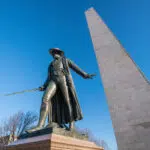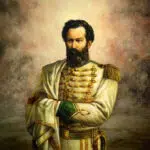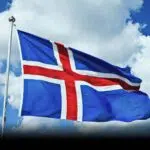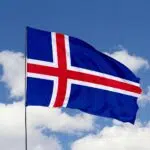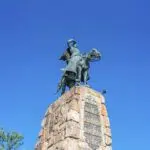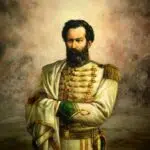Iceland Independence Day is celebrated every year on June 17. It is a special holiday that commemorates the foundation of the Republic of Iceland in 1944 when the country became a sovereign republic. Iceland had ties with Denmark for centuries and that came to an end on the birthday of Jón Sigurðsson. He is a figure of Icelandic culture and was the leader of the 19th-century Icelandic independence movement. Bells ring in harmony across the capital city of Reykjavík to celebrate the nation’s freedom. It is a reminder of the sacrifices made by the country’s past heroes to ensure freedom for future generations.It is an occasion marked by great joy and national pride. People paint the national flag on their faces and participate in the parade. Music has a great significance, and there are always musical shows on the day.
History of Iceland Independence Day
Iceland Independence Day is a holiday that is celebrated all over the nation. There are many activities that take place including traditional parades. The parades are held in each city, village, or town and are usually led by a brass band. Riders lead the parade on Icelandic horses while bearing the national flag. The Icelandic scout movement also follows the band during the parades. Speeches are held in public after the parade. When the public speeches are over, other more informal celebrations begin. This usually includes a variety of musical performances.Iceland appears to have no prehistorical records. Two historical texts recall the country’s past. It is said to be discovered and settled by the Norse people in the Viking age. The “Book of the Icelanders” or “Íslendingabók” states that people settled in Iceland in about 870—930 A.D. A second source, “Landnámabók,” the “Book of Settlements,” dating from the 12th century, states that the first permanent settler, Ingólfur Arnarson, came from Norway in 874 A.D. He named the place where he settled Reykjavik. Most of the settlers came from Norway, but some hailed from other Nordic countries and the Norse Viking Age settlements in the British Isles. In 1602, Denmark monopolized all foreign trade in Iceland.The Danish crown continued to increase its hold on Iceland over the years, including on a constitutional level. In 1803, Iceland was allotted two seats at a new consultative assembly for the Danish Isles at Roskilde, Denmark. This kindled desire in Iceland for restoration of the Icelandic Althing assembly (the oldest legislature in the world).In 1874, the King presented Iceland with a constitution whereby the Althing had the legislative power in internal affairs; however, the cabinet minister responsible for Iceland was the minister of justice in the Danish government. In 1918, Iceland became a separate state under the Danish crown, while only foreign affairs remained under Danish control. 1940, Germany occupied Denmark, and this union dissolved. In 1941, the United States took over the defense of Iceland, and the forces brought employment and prosperity to the country.Iceland was declared an independent republic on June 17, 1944, even though it gained independence from Denmark much earlier, on December 1, 1918. That was when the Act of Union with Denmark was signed. The Act declared Iceland to be an independent state under the Danish crown. There was a clause in the Act that changed the relationship that Iceland had with Denmark. Voters were required to decide whether the Union with Denmark should be abolished and if they should adopt a new republican constitution. There was a 98% vote in favor of both measures with a voter turnout of 98.4%. The holiday celebrates all the efforts that led to the nation gaining its independence.The holiday has been a national public holiday since 1971. Employers have been giving their workers the day off since 1945. It is an important day in the country and almost all citizens participate in the festivities.
Iceland Independence Day timeline
According to the “Book of the Icelanders” or "Íslendingabók" people settle in Iceland.
The Icelandic parliament is first established in Þingvellir.
Iceland loses its independence when it became a part of the Norwegian crown.
Iceland becomes a part of the Danish colony.
Iceland receives home rule for the first time from Denmark.
The republic is formed based on the Act of Union with Denmark.
Iceland is declared an independent republic on June 17.
Iceland Independence Day FAQs
Why was the Icelandic independence vote delayed?
Because of the German occupation of Denmark, the revision to the Act of Union was delayed until after the Second World War.
When can the Northern lights be seen in Iceland?
The Northern lights can be seen in Iceland from September to March every year.
What is Iceland’s national sport?
The national sport of Iceland is handball.
Iceland Independence Day Activities
-
Watch the parades
Join the parade and grab some candy and balloons. Enjoy the bands, the concerts, and the musical acts. There are many parades that take place on Iceland Independence Day. You can watch them or participate if you want.
-
Take part in the ceremonies
Dress up in the national costume. Get into the rhythm of the music and dance the day away. Paint the national flag on your face. Get together with friends, family, or other people and have fun on the day. There are various ceremonies that take place during the holiday. You can enjoy street theater, outdoor dancing, and sideshows.
-
Fly the Icelandic flag
The national flag of Iceland is visible around the country on the holiday. You can bear the flag to represent the nation’s freedom.
5 Interesting Facts About Iceland
-
JonSigurðsson wasn’t president
Sigurðsson is usually called 'Jón president' even though he was never president of Iceland.
-
Vigdís Finnbogadóttir was the first female president
She was the first elected female head of state in the world when she became president in 1980.
-
Iceland has had six presidents
Iceland’s presidents include Sveinn Björnsson, Ásgeir Ásgeirsson, Kristján Eldjárn, Vigdís Finnbogadóttir, Ólafur Ragnar Grímsson and the current one, Guðni Th Jóhannesson.
-
Many people live in the capital
Over 60% of the people in Iceland live in the capital city, Reykjavik.
-
Iceland is eco-friendly
The country was recently ranked as one of the eco-friendliest countries.
Why We Love Iceland Independence Day
-
It is a reminder of freedom
Iceland Independence Day serves as a reminder of the nation’s freedom. It reminds people to cherish their independence. It took from 1918 to 1944 for Iceland to gain its independence from Denmark. If you’re looking for an informative way to pass an afternoon, do a bit of research into the history.
-
It creates unity
The holiday helps to promote unity within the country. The citizens come together to celebrate a common victory. Iceland Republic Day is dedicated to the country and brings people together. It makes us appreciate its unique culture.
-
It’s a day to have fun
Icelanders take to the streets and watch colorful ceremonies, parades, street theater, sideshows, and outdoor concerts, dancing in the midnight sun. What better way than to celebrate in this manner?
Iceland Independence Day dates
| Year | Date | Day |
|---|---|---|
| 2023 | June 17 | Saturday |
| 2024 | June 17 | Monday |
| 2025 | June 17 | Tuesday |
| 2026 | June 17 | Wednesday |
| 2027 | June 17 | Thursday |






